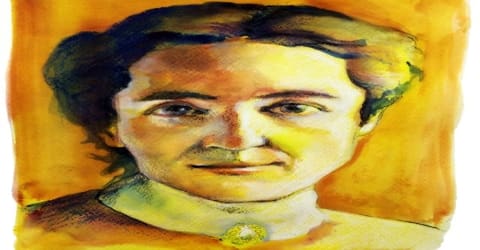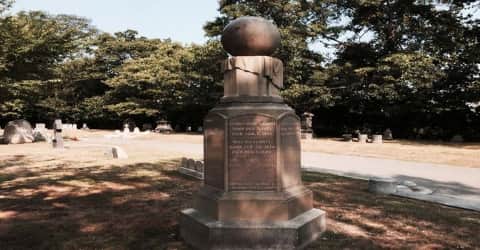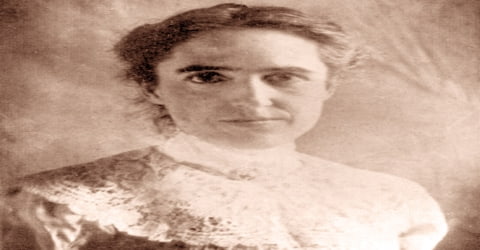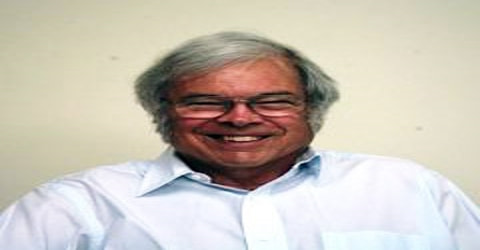Biography of Henrietta Swan Leavitt
Henrietta Swan Leavitt – American astronomer.
Name: Henrietta Swan Leavitt
Date of Birth: July 4, 1868
Place of Birth: Lancaster, Massachusetts, U.S.
Date of Death: December 12, 1921 (aged 53)
Place of Death: Cambridge, Massachusetts, U.S.
Occupation: Astronomer
Father: George Roswell Leavitt
Mother: Henrietta Swan
Early Life

An American astronomer known for her discovery of the relationship between period and luminosity in Cepheid variables, pulsating stars that vary regularly in brightness in periods ranging from a few days to several months, Henrietta Swan Leavitt was born on July 4, 1868, in Lancaster, Massachusetts, U.S. the daughter of Congregational church minister George Roswell Leavitt and his wife Henrietta Swan Kendrick. She found that a certain type of star, the Cepheid variable, pulses at a rate that’s related to its brightness. A Cepheid variable star’s pulse rate reveals the star’s true, fundamental brightness. The amount by which the star’s brightness is dimmed by distance allows the star’s distance from the earth to be calculated.
Leavitt was also the first person to determine the correlation between Cepheid variables and brightness. Born and raised in Lancaster, Massachusetts, she graduated from ‘Harvard University.’ During her years at ‘Harvard,’ she intensely studied a wide range of topics, including philosophy, calculus, fine arts, analytic geometry, and classic Greek. In the early 1900s, she started working at the ‘Harvard College Observatory,’ where she was assigned to the study of variable stars. She concluded in one of her early papers that the brightness of variables was directly proportional to the period of their luminosity. Although she remained anonymous for most of her life, her papers were analyzed later and paved way to several scientific breakthroughs. Her research results were regarded as the first “standard candle” that was used to measure the distance from our galaxy to faraway galaxies. Edwin Hubble, who concluded that the universe was always expanding, gave the credit of his discovery to Henrietta’s luminosity-period correlation.
Childhood, Family and Educational Life
An American astronomer, Henrietta Swan Leavitt (ˈlɛvɪt), was born on July 4, 1868, in Lancaster, Massachusetts, the U.S. to George Roswell Leavitt and Henrietta Swan Kendrick. Her father was a local Congregational church minister. Theirs was a financially prosperous family, and she was the eldest of the seven siblings. Two of the siblings died as babies. The family had a history of sicknesses, and Henrietta herself struggled with ill health during most of her childhood. Her father’s job had him frequently moving from one place to another. As a teenager, she spent a lot of time in Cleveland, where her father worked in a local church. After graduating high school, Henrietta joined ‘Oberlin College’ in Ohio for a year-long preparatory course.
Unlike many women in the 1800’s, she went to college, attending both Oberlin College and Radcliffe College and graduating from Radcliffe in 1892. In college, she did not focus on astronomy or even science but instead pursued a broad liberal arts education that included languages, art, and mathematics. Near the end of her college career, she decided to take a course in astronomy, and this decision would change her life. She was captivated by the study of the stars and decided to sign up for more astronomy courses and pursue an advanced degree in the subject.
In 1893, Leavitt obtained credits toward a graduate degree in astronomy for her work at the Harvard College Observatory, but she never completed that degree. However, invented the title Curator of Astronomical Photographs for her in 1898. Leavitt left the observatory to make two trips to Europe and completed a stint as an art assistant at Beloit College in Wisconsin. At this time she contracted an illness that caused her increasingly to lose her hearing. She would suffer from health problems for the rest of her life, but she didn’t let it keep her down. Even though she was too sick to attend school full-time, she volunteered at the Harvard Observatory from 1893-1895.
At the age of 23, Henrietta graduated with an equivalent of a ‘Harvard’ BA degree. She was offered many jobs that were not related to astronomical studies, but she volunteered to stay back and work as a research assistant to Edward Charles Pickering.
Personal Life
Henrietta Swan Leavitt was a quietly serious person, dedicated to her work, devoutly religious, and prone to ill-health. She became increasingly deaf as the years passed. She never married and dedicated her entire life to the study of heavenly bodies instead.
Leavitt suffered from ill-health all her life. In the last few decades of her life, she had significantly lost her hearing abilities. She was made the head of stellar photometry at the Harvard College Observatory in 1921 but did not live long enough to enjoy her new role.
Career and Works

The American educational society deemed women unworthy of operating telescopes and conducting the study of stars and other heavenly bodies. Thus, after her graduation, Leavitt traveled to Europe and also worked as an art assistant at ‘Beloit College’ in Wisconsin. However, she soon got sick and lost her hearing partially.
Henrietta Swan Leavitt returned to the Harvard College Observatory from her travels in 1903. Because Leavitt had independent means, Pickering initially did not have to pay her. Later, she received $0.30 an hour for her work, being paid only $10.50 per week. She was reportedly “hard-working, serious-minded …, little given to frivolous pursuits and selflessly devoted to her family, her church, and her career”. One of the women that Leavitt worked within the Harvard Observatory was Annie Jump Cannon, who shared the experience of being deaf. Pickering assigned Leavitt to the study of variable stars of the Small and Large Magellanic Clouds, as recorded on photographic plates taken with the Bruce Astrograph of the Boyden Station of the Harvard Observatory in Arequipa, Peru. She identified 1777 variable stars.
Leavitt analyzed photographs of the heavens recording star brightness data. This was part of a Harvard project to catalog the position, color, and brightness of all the observable stars in the universe, which was then thought to consist of the Milky Way. Billions of other galaxies remained to be identified, and Leavitt’s future work would make this possible. Leavitt was asked to take particular note of stars whose brightness varied, and the period of the variation in other words how long it took a variable star to make a complete cycle from bright to dim to bright again: this might have been days, weeks, or months.
Leavitt focused on thousands of variable stars in the ‘Magellanic Clouds’ and noticed a strange pattern. She intensified her study and concluded that the brightness of a variable star determined its period of variability. In 1908, she published her findings in a paper titled ‘Annals of the Astronomical Observatory of Harvard College.’ She focused on the Cepheid variables, a group of highly luminous stars. She became the first-ever person to determine the relationship between their period of pulsation and their luminosity. She also created a formula to calculate the period-luminosity relationship of the stars.
The problem was given to Leavitt, who began with a sequence of 46 stars in the vicinity of the north celestial pole. Devising new methods of analysis, she determined their magnitudes and then those of a much larger sample in the same region, extending the scale of standard brightnesses down to the 21st magnitude. These standards were published in 1912 and 1917. She then established secondary standard sequences of from 15 to 22 reference stars in each of 48 selected “Harvard Standard Regions” of the sky, using photographs supplied by observatories around the world. Her North Polar Sequence was adopted for the Astrographic Map of the Sky, an international project undertaken in 1913, and by the time of her death she had completely determined magnitudes for stars in 108 areas of the sky. Her system remained in general use until improved technology made possible photoelectrical measurements of far greater accuracy. One result of her work on stellar magnitudes was her discovery of 4 novas and some 2,400 variable stars, the latter figure comprising more than half of all those known even by 1930.
Leavitt was astonished at the number of variable stars she discovered in these clouds-969 in the small cloud and 808 in the large cloud, making a total of 1,777. These stars are classed as Cepheid variable stars, named for Delta Cephei in the constellation Cepheus. This first Cepheid variable star was discovered by John Goodricke in 1784.
Leavitt published another paper in 1912, which was signed by Pickering himself. Following her immense contribution to the world of astronomy, she was bestowed with several honors during her lifetime. She was made part of associations such as ‘Phi Beta Cappa,’ the ‘American Association of University Women,’ the ‘American Association for the Advancement of Science,’ and the ‘American Astronomical and Astrophysical Society.’
In 1913, Ejnar Hertzsprung used parallax to determine the distances to a number of Cepheids in the Milky Way, and with this step, a method of determining the distance to any Cepheid was calibrated. (Actually, Hertzsprung made a mistake in his calibration, but that’s another story!) Astronomers now had what is often called a standard candle. They knew exactly how bright the candle must truly be, and could calculate how far away it was by the degree to which it was dimmed. Next, Edwin Hubble used Leavitt’s relationship between a Cepheid’s pulse rate and its brightness and Hertzsprung’s distance calibration to measure the distances to Cepheids located in a number of nebulae. He discovered that the Cepheids were so far distant that they were beyond the Milky Way; the nebulae were actually other galaxies and the universe was much bigger than anyone had realized.
Leavitt was also made an honorary member of the ‘American Association of Variable Star Observers.’ Esteemed physicist Harlow Shapley was made the director of the ‘Harvard’ observatory in 1921, and he made Henrietta the head of stellar photometry.
Leavitt’s discovery of a way to accurately measure distances on an intergalactic scale paved the way for modern astronomy’s understanding of the structure and scale of the universe. The accomplishments of Edwin Hubble, the American astronomer who established that the universe is expanding, also were made possible by Leavitt’s groundbreaking research. Hubble often said that Leavitt deserved the Nobel Prize for her work. Mathematician Gösta Mittag-Leffler, a member of the Swedish Academy of Sciences, tried to nominate her for that prize in 1924, only to learn that she had died of cancer three years earlier.
Awards and Honor
The asteroid 5383 Leavitt and the crater Leavitt on the Moon are named after her to honor deaf men and women who have worked as astronomers.
One of the ASAS-SN telescopes, located in the McDonald Observatory in Texas, is named in her honor.
Death and Legacy
Henrietta Swan Leavitt died, age 53, of stomach cancer on December 12, 1921, in Cambridge, Massachusetts, U.S. and was buried in the Cambridge Cemetery near her mother, father, and her two siblings who died in infancy.

(Leavitt family monument in Cambridge Cemetery)
Henrietta Swan Leavitt’s findings were the base for the discoveries of several future astronomers. The period-luminosity relationship was the foundation of the theory of the “standard candle” in astronomy, which was the key aspect of measuring the distance to the remotest galaxies in the observable universe. When astronomers started focusing on other galaxies, it was revealed that other galaxies also had Cepheids. They thus became a key clue to determine the presence of the “spiral nebulae” as independent galaxies located far away from the ‘Milky Way.’ This led to probably one of the greatest astronomical discoveries that took away the ‘Milky Way’s assumed central position.
“Sitting at the top of a gentle hill,” writes George Johnson in his biography of Leavitt, “the spot is marked by a tall hexagonal monument, on top of which sits a globe cradled on a draped marble pedestal. Her uncle Erasmus Darwin Leavitt and his family also are buried there, along with other Leavitts. …” A plaque memorializing Henrietta and her two siblings, Mira and Roswell, is mounted on one side of the monument. Nearby are the graves of Henry and William James. There is no epitaph at the gravesite memorializing Henrietta Leavitt’s achievements in astronomy.
A play based on her life, ‘Silent Sky,’ follows her journey from ‘Harvard’ to her death.
Information Source:
















